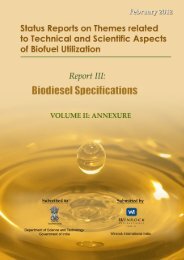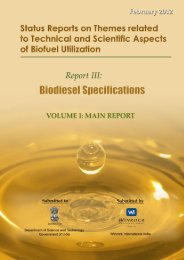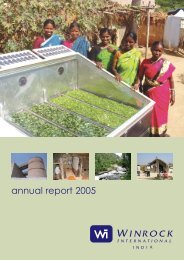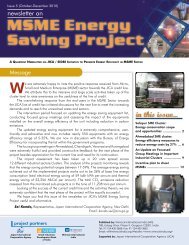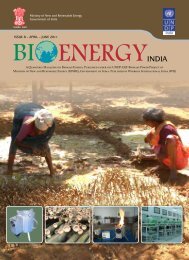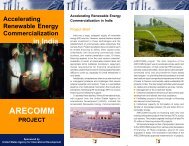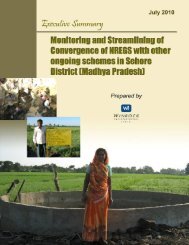Executive Summary
Executive Summary
Executive Summary
You also want an ePaper? Increase the reach of your titles
YUMPU automatically turns print PDFs into web optimized ePapers that Google loves.
NATURAL RESOURCE MANAGEMENT PRESPECTIVEPAPERJointly prepared byDr. Kinsuk MitraRitu BharadwajSunpreet KaurMd. Aatish Khan
<strong>Executive</strong> <strong>Summary</strong>The livelihoods of marginalized communities in the country are highly dependent on naturalresources. The marginalized include; tribal populations, scheduled castes, women, landless, migrantand casual labourers, who are characterized by low levels of literacy, poor health status, foodinsecurity, social exclusion, low levels of economic development, inadequate representation in keydecision-making bodies, and poor reach of development interventions and services. Further theirsources of livelihoods are extremely vulnerable and characterized by marginal and under-productivelandholdings, periodic droughts, environmental degradation (reduction in quality and quantity of forestresources, groundwater depletion, and soil erosion), insecure land tenure and a reliance on seasonalagricultural and forest labour coupled with inadequate reach to infrastructure, services, credit andmarkets. Their agriculture based livelihoods mostly remains subsistence because of the low rainfall,depleting ground water and frequent droughts and income from NTFP remains marginal due totremendous biotic pressure. In effect, these communities are mostly homogenous in terms of theirlevel of deprivation, economic status and livelihood resources, however variation in theirvulnerabilities were noticed on account of certain sections of community essentially the womenheaded households, women, BPL, migrants community being more vulnerable than others mainlydue to low levels of literacy, poor health status, food insecurity, social exclusion, inadequaterepresentation in key decision-making bodies and poor reach to development interventions.Evidences show that approaches that rely primarily on impacts from land-based investments canaddress only some causes of poverty and insecure livelihoods, particularly for households with smalllandholdings and limited access to forest. Many of these households rely on wage labour for much ofthe year to generate cash income for food security and other necessities. There is significant scope toincrease agricultural productivity even for very small landholdings and the returns from forest basedcollection, marketing and processing activities. However, the sustainable utilization of groundwaterreserves is currently constrained by imperfect policy framework and planning. In addition, constraintsto the full implementation of existing government legislation on land holdings in tribal areas limits poorpeople’s secure access to productive land. Similarly, it is possible to develop micro-enterprises for aproportion of households, but will again be heavily constrained by limited entrepreneurial skills andmarket opportunities, and business support infrastructure.Given these opportunities and challenges, Oxfam India aims towards achieving an inclusive growthfor the marginalized communities through sustainable natural resources management. Here, a clearunderstanding of patterns of marginalization of the poor and vulnerable communities is essential foridentifying strategies that can lead to their inclusive growth. This understanding needs to movebeyond the immediately evident exposure to specific issues and address some of the deepersystemic factors that shape exclusion of these groups. In many situations the factors causingmarginalization and exclusion are not very direct or immediately evident; instead, may be related toculturally based gender differences, differential access to basic resources and services and a host ofother factors. Thus strategies for addressing these issues and challenges have to be based on criticalsocial, physical, institutional and economic drivers of exclusion.1
This paper attempts to develop approaches / strategies to sustain livelihoods of marginalizedcommunities dependent on natural resources, in line with the above objective and Oxfam Indiastrategy 2010-15. The following sections detail out a thorough situation analysis, including a review ofexisting government policies on land, water and forests and their implementation along withidentification of challenges in addressing issues of livelihood of marginalized communities who aredependent on natural resources. This is followed by the section that details the proposed strategy forOxfam to enhance livelihoods of the poor and marginalized communities through improved accessand productivity of land, water and forest resources and better realization of rights and entitlements.2



